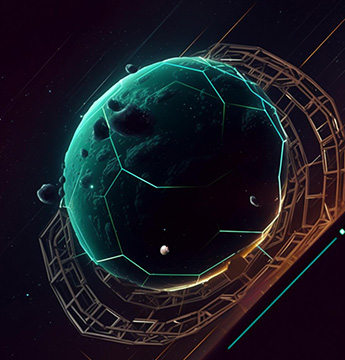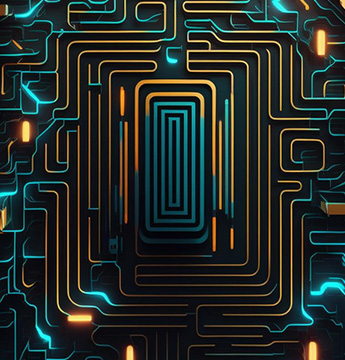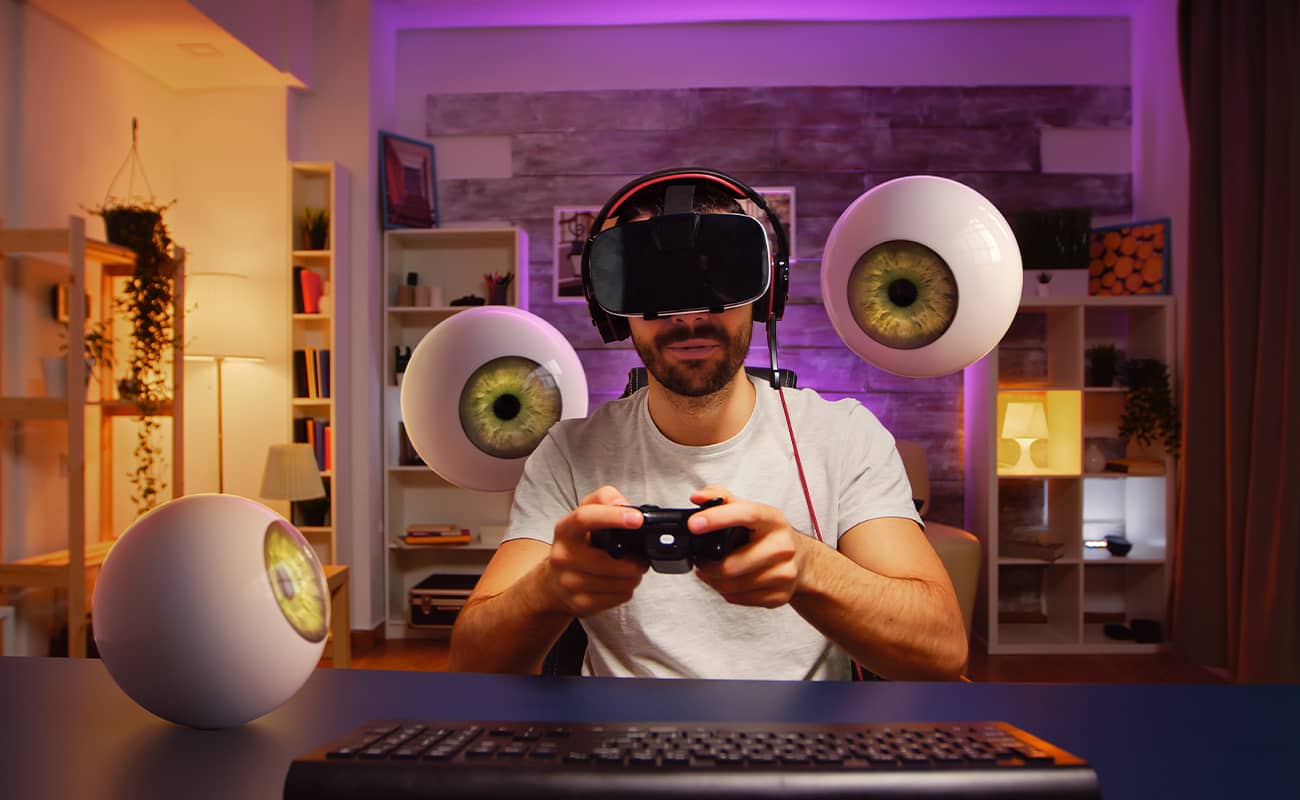
Marker-Based AR
Marker-Based Augmented Reality relies on the use of predefined visual markers, such as QR codes, unique patterns, or specific images, to overlay digital content in the real world. These markers serve as anchors or triggers that initiate AR experiences when scanned by a compatible device, like a smartphone, tablet, or AR headset.
Once the device’s camera detects and recognizes a marker, it processes the visual data and renders corresponding AR content seamlessly onto the user’s screen. This content can include dynamic 3D models, animations, videos, audio, or interactive elements, creating an engaging and immersive experience.
Real-World Use of Marker-Based AR

Marker Detection

Content Mapping

Rendering & Interaction
Real-World Use of Marker-Based AR
Virtual Product Previews
In-Store Experience
Interactive Learning
Skill Training
Patient Education
AR Surgery Guides
Virtual Property Tours
Design Visualization
Interactive Experiences
Event Engagement
Engaging Campaigns
Customer Interaction
Assembly Assistance
Quality Control
Augmented Tours
City Exploration
Advantages of Marker-Based AR
Cost-Effective
Accurate and Stable
Versatile Applications
Ease of Deployment
Markerless AR
Markerless Augmented Reality, also known as location-based AR or SLAM (Simultaneous Localization and Mapping) AR, allows digital content to be anchored in the real world without the need for predefined visual markers. Instead, it relies on a combination of a device’s camera, sensors (like GPS, gyroscope, and accelerometer), and advanced algorithms to map the environment and place AR elements dynamically.
This type of AR creates a seamless experience, enabling users to interact with virtual objects anywhere, whether indoors or outdoors, making it a versatile and powerful technology.

How Markerless AR Works

Environmental Scanning

Mapping & Placement

Interaction & Rendering
Real-World Use of Markerless AR
Virtual Try-Ons
Home Design
Immersive Gameplay:
Interactive Storytelling
AR Classrooms
Professional Training
Augmented Travel Guides
Wayfinding
Immersive Campaigns
Social Media Filters
Product Visualization
AR Catalogues
Advantages of Markerless AR

No Physical Markers Needed

Highly Immersive

Wide Range of Applications

Enhanced User Engagement

Ease of Use

AR Game
Augmented Reality (AR) games blend the digital and physical worlds to create immersive and interactive gaming experiences. Using advanced technology, these games overlay virtual elements—such as characters, objects, or landscapes—onto the real-world environment through devices like smartphones, tablets, AR glasses, or headsets.
Unlike traditional video games, AR games transform the player’s surroundings into an integral part of the gameplay, offering a unique and dynamic experience that bridges reality and imagination.
How AR Games Work

Environment Scanning

AR Content Overlay

User Interaction

Dynamic Adaptation
Real-World Applications of AR Games
Immersive Storytelling
Dynamic Challenges
Gamified Learning
Skill Development
Branded Games
Event Engagement
Advantages of AR Games

Immersive and Engaging

Encourages Physical Activity

Enhances Social Interaction

Boosts Cognitive Skills

Innovative Storytelling
Key Features of AR Games
Immersive Gameplay
Interactive Elements
Location-Based Feature
Multiplayer Capability
Advantages of AR Games

Hyper-Realistic Graphics

Deeper Interactivity

Cross-Platform Experiences

Personalized Gameplay
How AR Filter works

Facial Recognition & Object Detection

AR Overlay Application

Real-Time Interaction

Rendering & Display
Real-World Applications of AR Filters
Entertainment
Trending Content
Brand Awareness
Interactive Campaigns
Event Engagement
Virtual Backdrops
Virtual Try-Ons
Personalized Shopping
Playful Interactions
Mini-Games
Advantages of AR Filters

High Engagement

Cost-Effective Marketing

Scalable Reach

User-Generated Content

Enhanced User Experience
Key Features of AR Filters
Customizable Effects
Real-Time Interaction
Device Compatibility
Easy Sharing
Advantages of AR Games

Hyper-Realistic Graphics

Deeper Interactivity

Cross-Platform Experiences

Personalized Gameplay

WebAR
WebAR (Web-Based Augmented Reality) is a technology that delivers AR experiences directly through web browsers, without the need to download or install a dedicated app. By leveraging modern web technologies like WebGL, WebRTC, and WebXR, WebAR enables users to interact with augmented reality content using just a smartphone, tablet, or desktop browser.
This seamless approach to AR makes it more accessible, engaging, and versatile, opening new possibilities for businesses, education, entertainment, and beyond.
How WebAR Works

Access Through a URL

Camera and Sensor Integration

Rendering and Interaction

Cross-Platform Delivery
Real-World Use of WebAR
Virtual Try-Ons
Product Visualization
Interactive Campaigns
Branded Experiences
Interactive Learning
Skill Training
Interactive Storytelling
Mini-Games
Virtual Guides
Historical Reconstructions
Project Visualization
Virtual Property Tours
Advantages of WebAR

Accessibility

Cost-Effective

Global Reach

Seamless Integration

Scalable and Flexible
Key Features of WebAR
App-Free Experience
Wide Compatibility
Instant Accessibility
Customizability
Technologies Behind WebAR

WebGL (Web Graphics Library)

WebXR (Web Extended Reality)

A-Frame and Three.js

8thWall and ZapWorks
Virtual Reality (VR)
Virtual Reality (VR) is an immersive technology that creates a fully artificial digital environment, enabling users to experience and interact with a computer-generated world as if it were real. By wearing specialized devices like VR headsets or using sensory controllers, users are transported to a virtual space that engages their senses of sight, sound, and sometimes touch, providing a highly realistic and interactive experience.
From gaming to healthcare, VR is revolutionizing how we work, learn, and play, breaking barriers between the real and virtual worlds.

How Markerless AR Works

Headset and Display

Motion Tracking

Immersive Audio

Environment Rendering

Interaction and Feedback
Uses of Virtual Reality
Immersive Gaming
Concerts and Events
Virtual Cinemas
Skill Development
Employee Training
Virtual Classrooms
Therapeutic Applications
Patient Care
Surgical Training
Virtual Property Tours
Design Visualization
Virtual Stores
Product Customization
Prototyping
Safety Training
Virtual Tours
Accessibility
Combat Training
Equipment Simulations
Virtual Art Studios
Performance Arts
Key Features of Virtual Reality
Immersive Experiences
Interactivity
3D Visualization
Multi-Sensory Engagement
Simulated Environments
Advantages of Virtual Reality

Immersive Learning

Global Accessibility

Enhanced Creativity

Cost Efficiency

Improved Engagement
Types of VR
Non-Immersive VR
Semi-Immersive VR
Fully Immersive VR
Collaborative VR

VR Games
WebAR (Web-Based Augmented Reality) is a technology that delivers AR experiences directly through web browsers, without the need to download or install a dedicated app. By leveraging modern web technologies like WebGL, WebRTC, and WebXR, WebAR enables users to interact with augmented reality content using just a smartphone, tablet, or desktop browser.
This seamless approach to AR makes it more accessible, engaging, and versatile, opening new possibilities for businesses, education, entertainment, and beyond.
How VR Games Work

Immersive Visuals

Motion Tracking

Controllers and Interaction

Audio Integration

Feedback Systems
Genres of VR Games

Action and Adventure
Thrilling combat scenarios, exploration of open worlds, and high-octane adventures.

Simulation
Realistic simulations of driving, flying, or performing specific tasks.

Puzzle and Strategy
Games that challenge cognitive skills in immersive environments.

Horror and Survival
Intense, adrenaline-pumping experiences that put players in terrifying scenarios.

Sports and Fitness
Combines gaming with physical activity for fitness and competition.

Role-Playing Games (RPGs)
Players assume the role of characters and immerse themselves in story-driven experiences.

Social and Multiplayer
Games designed for interaction and collaboration with other players in virtual worlds.

Horror and Survival
Intense, adrenaline-pumping experiences that put players in terrifying scenarios.
Advantages of VR Games

Enhanced Immersion

Physical Engagement

Educational Value

Social Connectivity

Replayability
Key Features of VR Games
Full Immersion
Interactive Gameplay
Realistic Environments
Multi-Sensory Engagement
Dynamic Challenges

BC Producer
Director of a Digital Marketing AgencyWorking with Zaap Solutions has been an incredible experience. Their expertise in AR development brought our vision to life—transforming digital cartoon images into immersive, real-world animated journeys with seamless animation and voice integration. Their innovation and attention to detail exceeded expectations. Highly recommend their services for anyone looking to push the boundaries of AR technology!

Vuteni
CEOThe team's expertise in VR technology and their dedication to delivering a seamless and captivating experience was remarkable.

Abhishek
Sales ManagerThe gaming work exceeded expectations with detailed graphics, smooth gameplay, and immersive storytelling. It's a favorite in my collection, providing endless enjoyment. Great job!


Social AR
Augmented Reality (AR) filters are digital overlays that transform and enhance real-world images or videos captured by a camera. These filters use advanced AR technology to add virtual effects, animations, or interactive elements in real time, creating visually engaging and immersive experiences.
Widely popular on social media platforms like Instagram, Snapchat, and TikTok, AR filters are not only a form of entertainment but also a powerful tool for marketing, education, and brand engagement.